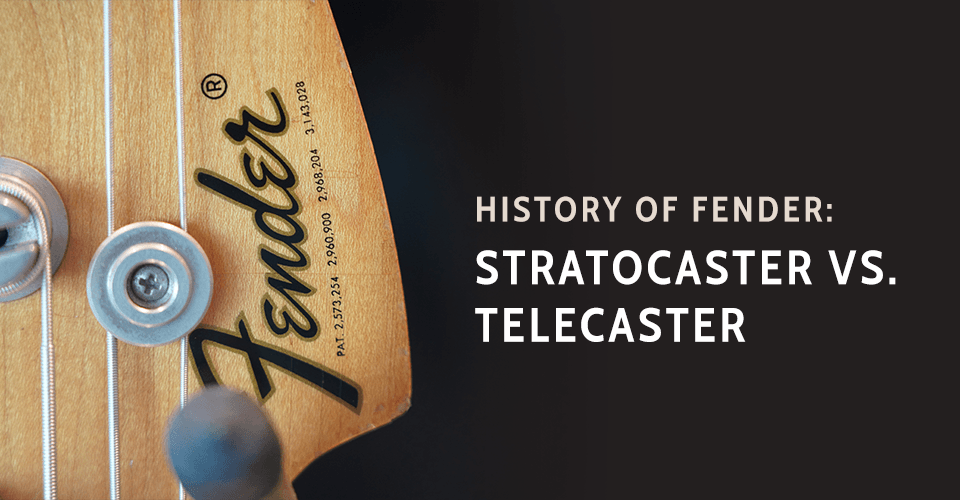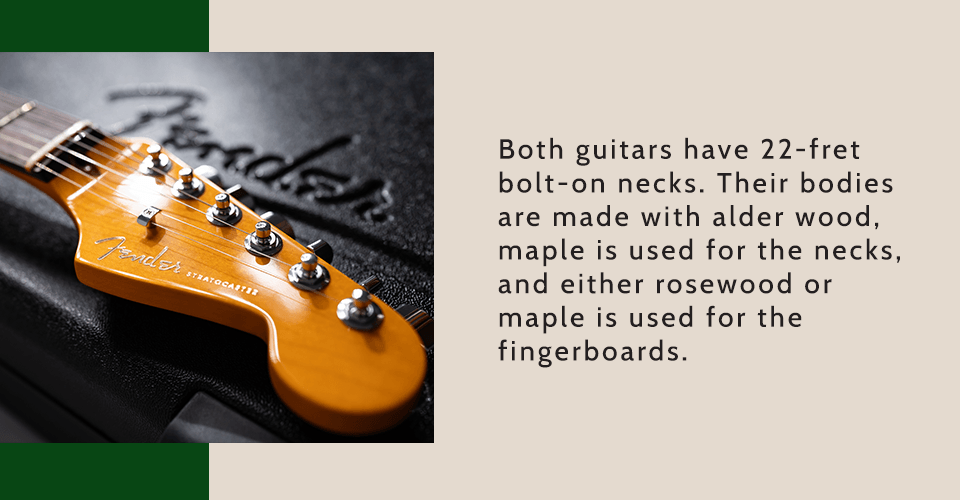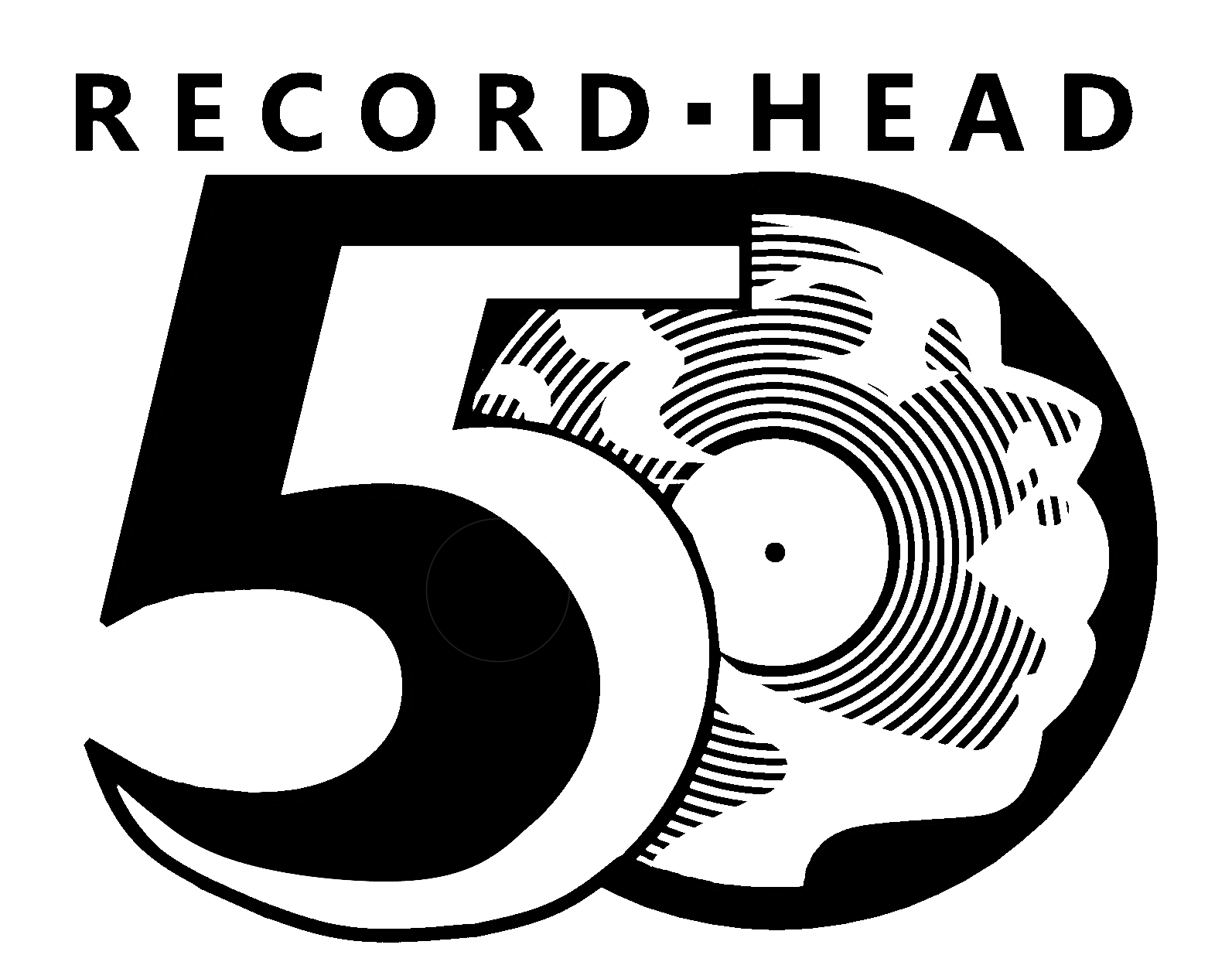
The Telecaster and Stratocaster are two of the most legendary guitars in history. Many iconic musicians play the Strat or Telecaster, and both guitars have left their mark on music history.
Electric guitarists love quibbling over which is better, but what is so unique about Fender guitars, and why are guitarists so passionate about the Stratocaster vs. Telecaster debate? Let’s find out!
The History of Fender Guitars
Leo Fender, born Clarence Leonidas Fender in 1909, was a trained accountant, but he had another passion — surprisingly, it wasn’t playing guitar.
Fender showed an exceptional talent for electronics from a young age and enjoyed building and repairing audio equipment, including radios. He opened his radio repair shop, Fender Radio Service, in 1938 and became the go-to for local musicians who needed PA systems and wanted to amplify their guitars.
The local musicians inspired Fender. He had a keen ear for listening to their needs and finding ways to deliver. He partnered with his engineer and inventor friend “Doc” Kaufmann to found K&F Manufacturing Corporation in 1943, and they started creating guitars.
Doc left the partnership in 1946. The move caused Fender to sell his radio repair shop and rename K&F Manufacturing Corporation to Fender Manufacturing. He then embarked on a journey that changed the course of electric guitars and led to Fender’s induction into the Rock & Roll Hall of Fame.
The Birth of the Telecaster and Stratocaster
Solid-body guitars were not a new invention, but they were still a novelty. Fender Manufacturing focused solely on guitars and finding new ways to revolutionize the instrument.
Fender started working on a design for solid-body guitars, and in 1950, Fender introduced the Esquire. The Esquire was a single pickup, solid-body guitar that could be played louder and with less feedback than any other guitar at the time.
In 1951, Fender released a double-pickup version called the Broadcaster — you can see Fender’s love for radios shining through here! After a minor legal dispute, the Broadcaster was renamed the Telecaster and became the first mass-produced solid-body guitar.
But pioneering the first mass-produced solid-body was not enough, and Fender once again set off on a mission to reinvent the guitar. Spoiler: He succeeded. And lo and behold — the Stratocaster was released in 1954.
The Stratocaster featured several innovative elements. The guitar’s unique body shape was at the top of that list, and the design has now become the standard for electric guitars. The guitar showcased a contoured back, extended horns and a double cutaway. But the design wasn’t just a visual statement. The Strat offered guitar players greater balance and comfort, considering the weight the guitar places on the shoulder while standing up.
The Strat also debuted the three-pickup design that gave players a wider range of versatility and tone quality, plus a simplified vibrato arm. Fender had done it — the Stratocaster was booming, and its innovations became industry standards.
Stratocaster vs. Telecaster
Both guitars are popular choices, with different players championing one or the other. The instruments have evolved through the years and enjoyed variations that make the guitars somewhat similar. But the original Fender Telecaster and Fender Stratocaster were distinct guitars. Key differences in these Fender guitars include:
- Versatility: The Stratocaster gives you a wider range of tones, hands down. But the Telecaster is just as versatile. The guitar’s design was revolutionary in its own right, popularizing the solid-body guitar. But its design, though reliable and solid, was quite simple. The guitar wasn’t created for any specific genre of music — just for music! But this is actually the Telecaster’s advantage. It is so versatile.
- Ease and comfort: The point of ease and comfort will almost certainly come down to personal preference. Thanks to their unique body style, Stratocasters are generally more comfortable to hold, but Telecasters are easier to tune.
- Body: The Stratocaster’s double cutaway design makes the fretboard more accessible. The Telecaster’s body features a single cutaway design, resembling an acoustic guitar’s body. The Stratocaster has a contoured back, while the Telecaster has a flat top and back.
- Pickups: The Stratocaster features two pickups, while the Telecaster has three. The Strat’s 3-pickup design gives you more control over your guitar’s sound, as there is greater versatility in the output of tones.
- Whammy bar: Stratocasters commonly have an integrated whammy bar — or tremolo arm — that Telecasters do not.
- Controls and pickup selector switches: The Telecaster has a master volume control and a master tone control. The guitar also features a 3-way pickup selector switch. The Strat has one master volume control, two for tone and a 3-way or 5-way pickup selector switch, depending on the model.
- Positioning of cable jack: The Strat’s cable jack is on the top, and the Telecaster’s is on the side.
- Similarities: Both guitars have 22-fret bolt-on necks. Their bodies are made with alder wood, maple is used for the necks, and either rosewood or maple is used for the fingerboards.

Telecaster Pros and Cons
Telecasters are versatile guitars with a simple design. Here is a closer look at the pros and cons of a Telecaster.
Telecaster Pros
Consider the advantages of Telecaster guitars:
- Light and playable, making it perfect for beginners
- Models to suit a variety of budgets
- Versatile to suit an assortment of genres
- Easy to modify
- Iconic twangy sound
Telecaster Cons
Now, let’s look at some of the disadvantages of Telecaster guitars:
- Thinner sound
- Limited tone options
- Not the best if you want distortion
Stratocaster Pros and Cons
Stratocasters are flexible guitars with an ergonomic design. Here is a closer look at the pros and cons of a Stratocaster.
Stratocaster Pros
Here are some benefits of Stratocasters:
- Contouring that makes the guitar comfortable to play
- Tonal versatility
- Greater control over sound
- Customizable options
- Value for money
Stratocaster Cons
There are some potential downsides of Stratocaster guitars, including the following:
- The tremolo system can interfere with playing
- Not well-suited to distortion
- Lacks the unique sound of Telecasters
Famous Stratocaster and Telecaster Players
So far, the two guitars are pretty evenly matched up. Sometimes, the easiest way to decide is to take the advice of your favorite legends!
Famous Stratocaster Players
These musicians play the Strat guitar:
- Jeff Beck
- Eric Clapton
- David Gilmour
- George Harrison
- Jimi Hendrix
- Buddy Holly
- Yngwie Malmsteen
- John Mayer
- Stevie Ray Vaughan
Famous Telecaster Players
Famous Telecaster players include:
- Jeff Buckley
- Bob Dylan
- Bill Frisell
- PJ Harvey
- Paul McCartney
- Jimmy Page
- Keith Richards
- Bruce Springsteen
- Muddy Waters
Is your favorite guitarist a Stratocaster player or a Telecaster player?
And the Superior Guitar Is…
No drum roll necessary… Let’s hear a guitar riff!
Whichever one fits your needs and sound preferences! The Stratocaster vs. Telecaster sound debate may never be resolved, largely because of the Telecaster’s iconic twang. However, the Stratocaster has tonal depth and variety that gives you greater control of your instrument and is much more comfortable to play. It’s all about what you’re looking for.
Head to Record Head for Your Next Favorite Guitar
Record Head is Milwaukee’s longest-running record store for a good reason. Our staff love sharing their knowledge on music, instruments, video games and gaming systems — your hobbies are our hobbies, and we are always ready to help.
All our equipment is thoroughly inspected and tested, and we offer a one-year manufacturer warranty for new items and a 30-day guarantee for used items. Come check out our selection of Stratocasters and Telecasters — both are winners — or contact us with any questions!










